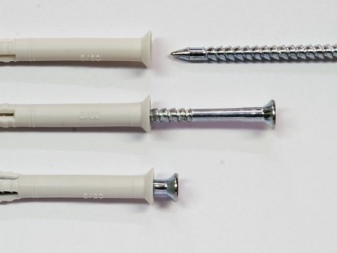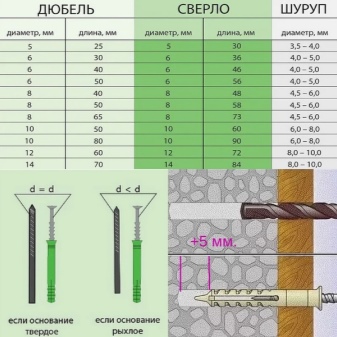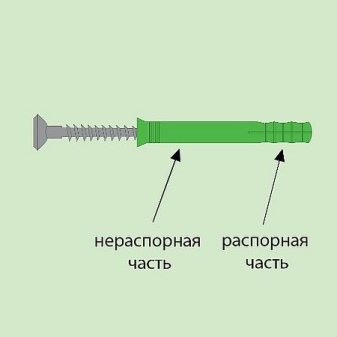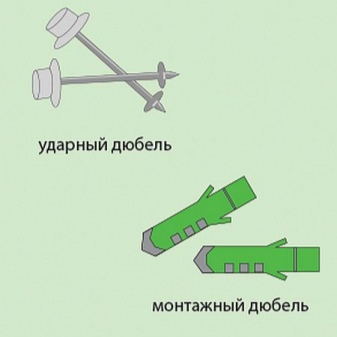How to choose a drill for a dowel?

How to choose the right dowel drill - this question is faced by many novice builders. Since the diameter of the hole when installing this type of fastener is really of great importance, you should be very responsible when looking for the right tool and consumables. It is better to know in advance about which drill to prepare a hole for a dowel 6, 8, 10 mm than to make a mistake in the process, and then correct it.


What to consider when choosing?
The need to choose the right drill for the dowel before installing it into the wall surface periodically arises for every home craftsman. Here accurate calculation is important, since any mistakes will lead to a deterioration in the strength of the connection. Before choosing the right tool in your arsenal, you should explore several important issues.


The first one is related to the definition type of materials, from which the walls are made, as well as their surface finishing. The second most important parameter: load under which the fasteners will be used. WITH diameter - the third basic element - questions usually do not arise: it is indicated in the markings on the surface of the drills and dowels.

A separate trick will help to exclude the scrolling of the fasteners in the hole, to avoid an excessive increase in its diameter. You need to start drilling when the drill size is smaller than necessary. So, for a 10 mm dowel, an impact drill with an 8 mm drill is taken - this option is suitable for a concrete monolith, beating cannot be used for cellular and hollow blocks. The hole is not drilled to its full depth. Then a drill corresponding to the diameter of the dowel is installed in the drill chuck, drilling is performed in a non-shock mode.


This approach will allow you not to break the hole being prepared when working with a powerful power tool, eliminate sideways movement and inaccuracies during work. Depth is selected based on the length of the fastener - it should be 3-5 mm longer, while you can use the stop on the drill stem to avoid excessive immersion. If you do not provide for this margin, during installation, the dowel can rest against an obstacle from the remaining dust or concrete chips. It is necessary to remember one more immutable rule: on hard surfaces, such as a concrete monolith, a brick, it is imperative to choose a drill exactly according to the diameter of the fastener... When drilling walls made of loose or foamed, cellular, hollow materials, the hole is made less by 1-2 mm, otherwise the fixation will not be tight enough.
Sleeve the dowel will loosen over time, it may fall out or create a backlash, reducing the reliability of the connection. For drilling in damp walls, this rule remains valid. Drill type is also selected individually, taking into account the material from which the base is made. Sometimes it's easier to prepare universal option, but for tiles or porcelain stoneware cladding, it is still better to take special... Drills with a victorious tip are optimal for work on brick and concrete.
For walls made of wood, polymer sheet materials, chipboard or other building boards, a special drill is not required. The most common high-strength tool steel drill will do.


Fastening objects of different weights
Before drilling a hole for a nail dowel or plastic spacer fastener, you should clarify the loads to be taken by the element installed in the wall. The heavier and more massive the suspended structure is, the larger the fasteners will be required. A light shelf can be fixed on a 5 mm dowel, a heavy rack - on its counterpart from 10 to 12 mm in diameter.
Self-tapping screws or screws should also be taken into account. For example, a standard size 6x40 mm corresponds to a dowel of 8 or 10 mm of the same length. You can correctly determine the required diameters using the table.


Lungs
For items of light weight, light mounting elements are used, and a quick installation is also suitable dowel nail. The hole in the walls made of concrete, reinforced concrete, solid bricks is drilled under them the same as the diameter of the fasteners. For an outer size of 6 mm, a length of 40 mm is enough. When hanging chandeliers, ceiling lamps, it is better to deepen the dowel more. Fit here fasteners with parameters 6x60 mm.


Middle weight
If you have to hang a shelf or other medium-weight item, you will have to take a more reliable type of fastening. Fit impact dowels with a diameter of 8 mm or more. The depth, respectively, and the length of the product used are determined at the place of installation. If a 60 mm dowel is fixed to the wall, then its analogue 20-30 mm longer will be needed in the ceiling.


It is important to correctly calculate the number of retainers. When properly installed, each dowel should bear a load of no more than 2.5 kg of the object's weight. That is, 4 holes or more will have to be drilled in the wall for a shelf or rack weighing 10 kg in order to provide for additional risk factors.
If you have pets that can jump onto the suspended structure, it is worth laying an additional safety load of 4-5 kg. The number of dowels will increase proportionally by 2 units.


Heavy
Massive interior items that do not have a floor support require careful fixation. The diameter of the dowel and drill here will be at least 10 mm, deepening can be done 60 mm or more into the wall, 80 mm - into the ceiling. Myself fasteners must be of the impact type - the counterpart is nailed into it. For hollow and cellular walls, certain restrictions are set on external loads, as well as the fasteners used - it is better to use chemical or special anchors with an increased opening area.
If you have to fix the elements of home sports equipment on the wall, ceiling, they are also hung separately. Here use anchor bolts, the selection of the diameter of which is carried out individually, but not less than 8x60 mm.


We attach to an unreliable surface
Concrete monolith and solid bricks are increasingly giving way to materials that do not have the same strength and hardness. Plasterboard partitions and tongue-and-groove slabs, cellular and aerated concrete, although they provide for the rapid construction of buildings, are much less reliable. When drilling holes, such the wall can crumble or crack, especially when it comes to hollow elements. To prevent this from happening, you should act according to certain rules.
- Choose lightweight fasteners from nylon and other polymers, giving preference to a diameter of at least 10 mm. This will allow it to be better anchored to the wall. For very porous walls, molly-type metal dowels are designed.
- Select a drill 1-2 mm smaller than the dowel. The winning option will do - it is quite versatile and reliable. When drilling tiles, tiles in the bathroom on a plasterboard partition, it is better to replace it with a diamond drill.
- Perform work in 1 stage. You need to drill in a non-shock mode, choosing the entire required length per pass.
- Prefer dowels specially designed for hollow walls and weak foundations. First of all, these include "butterflies", when installing a self-tapping screw or screw, revealing their side edges. A dowel with already cut edges sits directly into drywall much more reliably - no pre-drilling is required under it, you just need to wrap the product into the wall.The bearing capacity of such fasteners is small, but they are enough to hang a clock or a small painting.
- If the drill diameter is incorrectly selected, it is recommended to change the dowel. If this is not possible, formulations such as "liquid nails" will help to strengthen the fixation. They are also used when turning the installed mount. It takes 30-120 minutes for the dowel to be ready for the installation of the self-tapping screw.
- If the fasteners run into a partition or other obstacle, and a part of the sleeve remains outside, it can be carefully removed. When working on walls with a decorative coating, they are pre-protected with a sandpaper circle, putting it on a dowel. Then the extra edge is simply sawed off, a self-tapping screw or screw is installed as usual.
Considering all these recommendations, you can easily choose a suitable dowel and drill for its installation, as well as avoid mistakes often made by inexperienced craftsmen.


The following video describes the rules for choosing a dowel and anchor.













The comment was sent successfully.